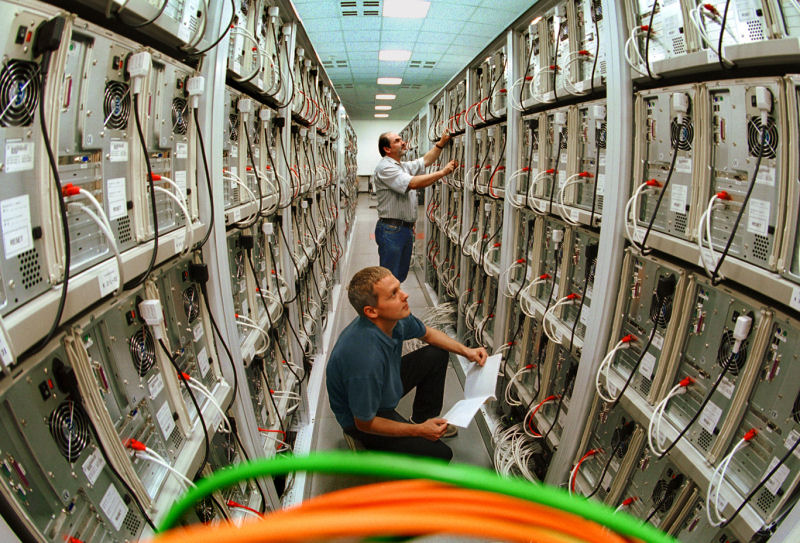In today’s digital-first world, businesses across sectors are driven and powered by technology at the forefront. However, all this infrastructure is vulnerable to privacy concerns and cyber attacks. To eliminate such risks, multiple internet-based services are available that come with a hefty price tag. The point is, do users even need them? The answer is no; because most of the services that are being used on a daily basis can be hosted from the convenience of home.

Not just this, self-hosting comes with a lot of other benefits like:
- It’s free and open-source
- The user is in full control at all times
- One always knows where their data is stored
Simply put, self-hosting opens up a lot of options as the users can host thousands of web services like Home-assistant, office packages, media streaming, gaming servers, etc. Additionally, users get access to managing smart home apps, working docs, photo galleries, and Minecraft servers right on their devices. They can also easily share the same with friends, family, and colleagues. In other words, one gets seamless experiences similar to that of paid services. The basic difference is that with self-hosting, you get to keep everything you do and store it entirely to your liking.
If we talk about the alternatives, one can opt to assemble a server at home. However, it is easier said than done. The server equipment is not just big and chunky but also makes a lot of noise and consumes a lot of power. The other option that most people end up with is renting a cloud server. In both cases, setting up everything needs technical skills and know-how since most cloud-based apps are designed to run on multiple nodes, i.e., a cluster, and not a single computer. Things don’t really end at this point. The setting up of Linux and software like Kubernetes further requires skills in server and network administration to constantly manage and monitor the infrastructure. While all this sounds complicated, there is a simple solution to this long and tedious process, called Turing Pi 2.
The Turing Pi 2 cluster board is designed to provide users with the creative freedom to set up their own server, home lab, workstation, edge computing node, or whatever it may be. It essentially runs up to four computers interconnected by a network, without compromising on efficiency and output in any way. This essentially means no excessive cables or big boxes.
The Turing Pi 2 is equipped with a 1Gbps managed switch, 2x Ethernet ports, 2x SATA3 ports, 4x USB3 ports, DSI and HDMI port, SIM card slot, and two mini PCIe slots that allow extending functionality with a variety of mini PCI-e extension cards. In addition to all this, the cloud computing device boasts a standard mini ITX form-factor, that enables the Turing Pi 2 to easily fit into any conventional rack-mount or computer case.
The company, with skilled team members behind putting together this innovative device, is Turing Machines Inc, a hardware and software development company focused on building solutions for edge computing and distributed systems. Above all these functionalities, what sets the device apart is its flexibility. The Turing Pi 2 comes with 2 mini PCI-e ports, allowing it to seamlessly connect with 3rd party extension boards. Users can easily add modules to add new hardware features, interfaces, sensors, interface converters, wireless modules, and even a cellular modem at any given time.
General Use cases
Hop down a Kubernetes ecosystem
Nowadays, online services are deployed via cloud-native apps and microservice architectures. The Turing Pi 2 is a Kubernetes-ready platform that allows users to build robust cloud-native applications and develop a proof-of-concept prototype before they get bombarded by cloud bills.
That’s not it. The device makes it easy for users to learn open-source tools such as Docker, Prometheus, Serverless, and Kubernetes with a cluster-level configuration, the same way they would do it in a real data center environment. Needless to say, the device truly democratizes the experience for end-users.
Data science
From heavy big data analysis to deploying machine learning apps at the edge, the Turing Pi 2 can handle it all. To add value to the proposition, Nvidia offers a whole variety of Jetson compute modules that are compatible with the Turing Pi 2 cluster board.
Easy to start
The icing on the cake is the baseboard management controller (BMC) with open-source firmware. The Turing Pi 2 firmware offers a set of remote management functions such as serial console over LAN, remote OS image flashing, authentication, self-testing, and Over-The-Air management, to name a few. This allows a user to bootstrap a cluster from bare metal hardware to an all-set-up kubeconfig. Users are already looking forward to getting their hands on this feature as it enables them to resume workflows after failures, making it easier to manage the nodes or even a whole fleet of clusters.
The most amazing and attractive offering provided by Turing Pi 2 in their ongoing launch campaign on Kickstarter is that after the backers complete their pledge, they will receive a link to a survey where they can select the compute modules and specific accessories that they require according to their needs. This information is further compiled and documented to secure all the supplies with vendors. Further to this step, the backers receive a link to where they can complete their order with the required add-ons, all in one place.
